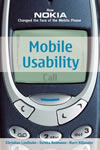James Todd, who works on the JXTA engineering team at Sun, blogged about the JXTA roundtable held just recently in San Francisco. Some interesting projects are going on in the JXTA community:
P2PSockets: “The Peer-to-Peer Sockets Project reimplements Java’s standard Socket, ServerSocket, and InetAddress classes to work on a peer-to-peer network rather than on the standard TCP/IP network.” — This project is especially interesting in light of the things that Verisign is doing. P2PSockets could potentially be used to create an alternative peer-to-peer domain name system (which would probably have a host of it’s own problems.)
Paperairplane: “… a Mozilla plugin that empowers people to easily create collaborative communities without setting up servers or spending money. It does this by integrating a web server into the browser itself, including tools to create collaborative online communities that are stored on the machine. Web sites are stored locally on a user’s machine. A peer-to-peer network is created between all of the Paper Airplane nodes that are running in order to resolve domain names, reach normally unreachable peers due to firewalls or NAT devices, and to replicate content.”
JNGI [pdf]: “The JNGI project is a framework for distributing applications among JXTA peer groups by implementing a classic Worker/Task pattern.“
 This book slapped me in the face last night as I was walking through the computer books section of B&N:
This book slapped me in the face last night as I was walking through the computer books section of B&N: